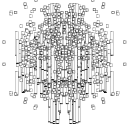I want to convolve using FFT with HRTF data for 3d audio production.
I know there are externals like 'earplug ~', but I want to complete them without them.
Is there anything that can be helpful? Lend me your wisdom
-
HRTF data convolution with FFT
-
@Laevatein do you want to avoid externals in general?
my spoonful of wisdom if you want to do something like earplug~ with pd-vanilla objects only:
First you'll have to figure out how to do the panning between your channels. basically you have two options, vbap (vector based amplitude panning, read: https://ccrma.stanford.edu/workshops/gaffta2010/spatialsound/topics/amplitude_panning/materials/vbap.pdf) or dbap (distance based amplitude panning, read http://www.pnek.org/wp-content/uploads/2010/04/icmc2009-dbap.pdf).
Actually it's just triangulation, not too complicated stuff. You'll find many open source code examples online, including pd-patches, e.g. [pan8~] in the else library or my humble implementation [pp.spat8~] in audiolab are dbap. Both are available in the deken repos (help -> find externals)The convolution part is a bit more complicated. You can do it in pd-vanilla, there are some examples in Alexandre Torres Porres live electronics tutorial, which is now part of the else library i think. But if you care about latency or if your IR files are larger than a few hundred milliseconds you'll have to use partitioning. Again, you can find examples online. Tom Erbe shared something a few years ago, there are patches in else, in audiolab ... Problem is though if you're doing the convolution part in pure data and you'll need to convolve with say 8-16 stereo impulse responses to get a decent binaural effect... it will bring your modern day computer to it's knees. You can try to outsource the convolution part to different instances of pd with [pd~] but I think it makes much more sense to do it with tools that are better suited for this task. jconvolver comes to mind if you're using jack.
good luck with your project!(edit: grammar)

